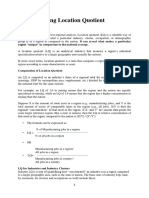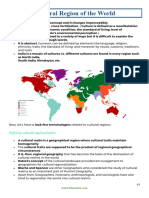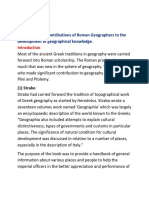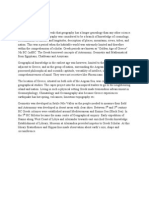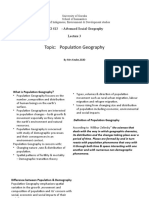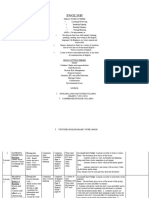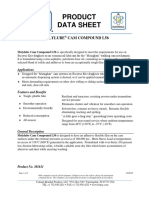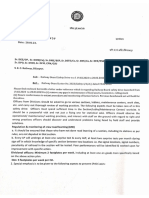100% found this document useful (2 votes)
9K views6 pagesPopulation Geography Notes
- Population geography is the study of the spatial distribution and characteristics of human populations. It analyzes factors like population size, composition, growth, and migration patterns across different places.
- A key aspect of population geography is analyzing population density and pressure. Population density refers to the closeness of people living in a given area, while population pressure considers the relationship between population size and the resources available.
- Population structures, such as age and sex composition, vary significantly between regions and impact factors like economic development. Age-sex pyramids provide insight into a population's demographic history by visualizing these characteristics.
Uploaded by
ignatiousmugovaCopyright
© © All Rights Reserved
We take content rights seriously. If you suspect this is your content, claim it here.
Available Formats
Download as DOCX, PDF, TXT or read online on Scribd
100% found this document useful (2 votes)
9K views6 pagesPopulation Geography Notes
- Population geography is the study of the spatial distribution and characteristics of human populations. It analyzes factors like population size, composition, growth, and migration patterns across different places.
- A key aspect of population geography is analyzing population density and pressure. Population density refers to the closeness of people living in a given area, while population pressure considers the relationship between population size and the resources available.
- Population structures, such as age and sex composition, vary significantly between regions and impact factors like economic development. Age-sex pyramids provide insight into a population's demographic history by visualizing these characteristics.
Uploaded by
ignatiousmugovaCopyright
© © All Rights Reserved
We take content rights seriously. If you suspect this is your content, claim it here.
Available Formats
Download as DOCX, PDF, TXT or read online on Scribd
/ 6












































